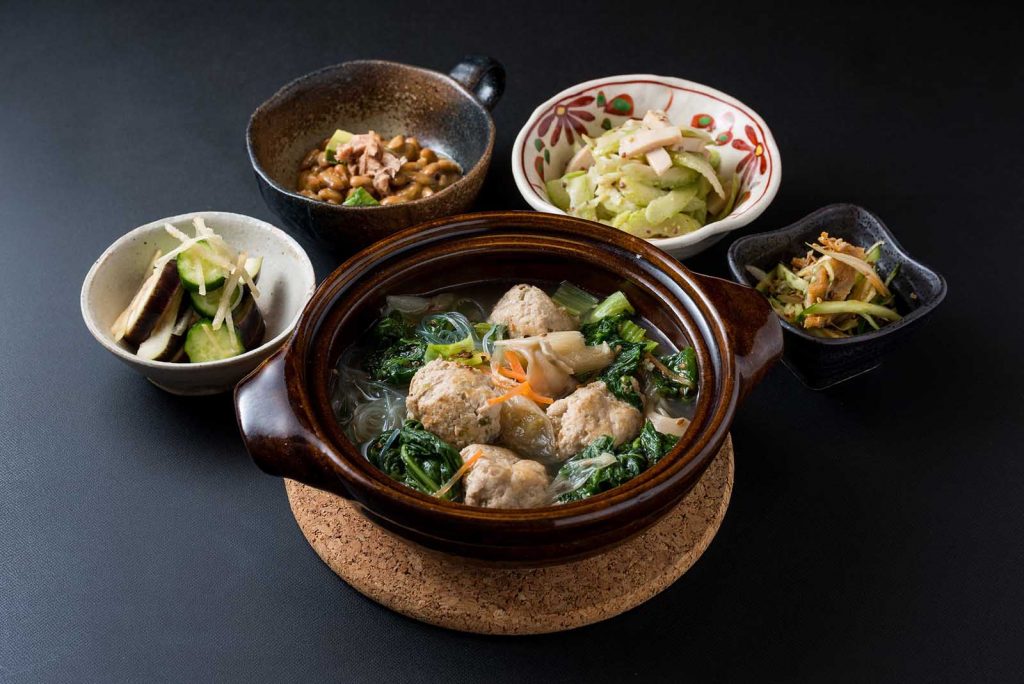Whether you’re visiting Japan or trying to mix things up in your own kitchen, you should get familiar with Japanese cooking. Traditional Japanese food uses many staple ingredients that are unusual in Western cuisine. If you’re looking to try some rich new flavors, Japan is the perfect place to start!
20 Traditional Japanese Foods
When visiting Japan, we found that dining out was not just about filling our bellies, it was an experience. Our meals could last for hours spanning 16 courses of delicious cuisine. The Japanese take eating seriously. Dining out almost feels like a ceremony where you are brought incredible displays of food that are meticulously arranged. When traveling to Japan, ordering food can be a bit intimidating so we are here to help you know what foods to keep an eye out for so you can try them in their most authentic forms.
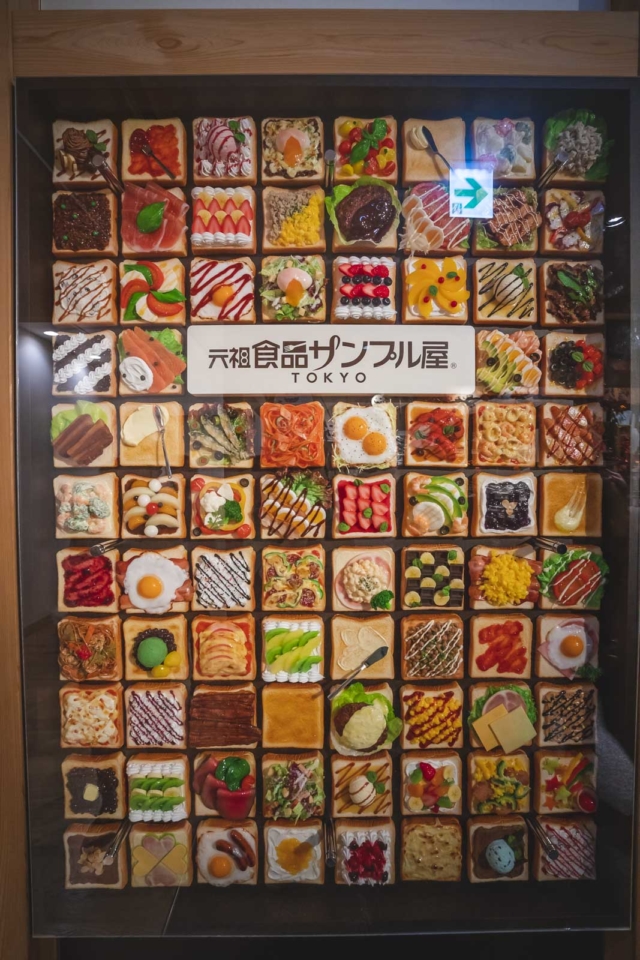
Keep reading, and we’ll tell you all about 20 Japanese dishes that you should try at home or abroad.
1. Sushi
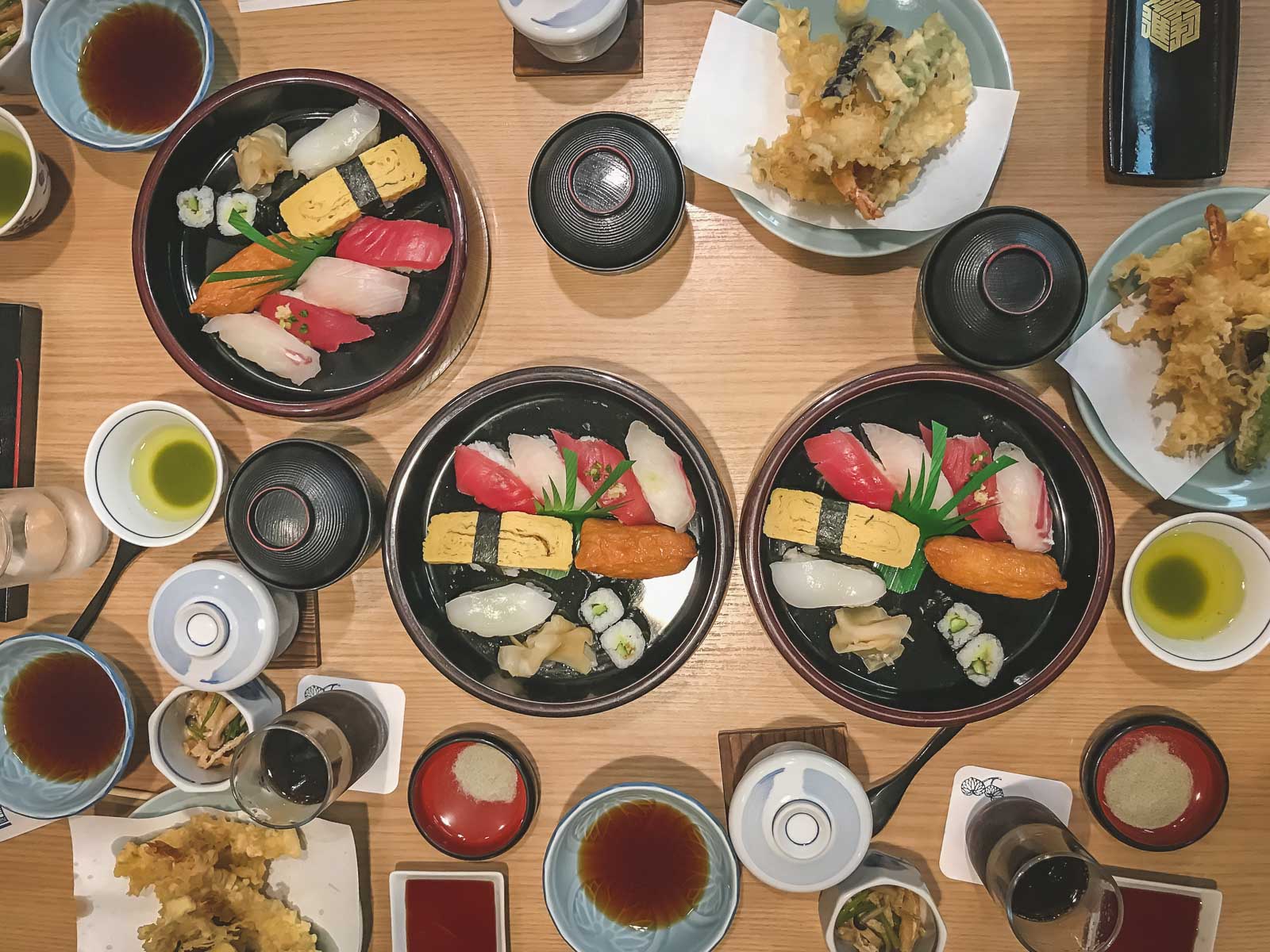
Sushi is now one of the most iconic Japanese dishes, but it actually originated in China in the 1st or second century BC and was known as narezushi. Contrary to popular belief, Sushi does not mean raw fish, it actually means sour rice. Sushi refers to any dish made with sushi rice (sour rice) accompanied with egg, vegetables, or fish.
There are a few common types of sushi that you’ve probably had if you’ve ever gone to a Japanese restaurant. These types include fillings inside rice wrapped in nori, bite-size lumps of rice with a single piece of raw fish on top, and sushi rice inside a pocket of fried tofu. When eating sushi, you’ll be surprised to find out that it is not the fish that is the most important ingredient, it is actually the sushi rice that makes the meal.
We find making Sushi at home really easy. Get yourself a bamboo mat, seaweed sheets, and sushi rice – all readily available at the grocery store and then fill it with anything from cucumber to avocado and salmon to tuna. Here are some great recipes to follow when making sushi at home.
2. Sashimi
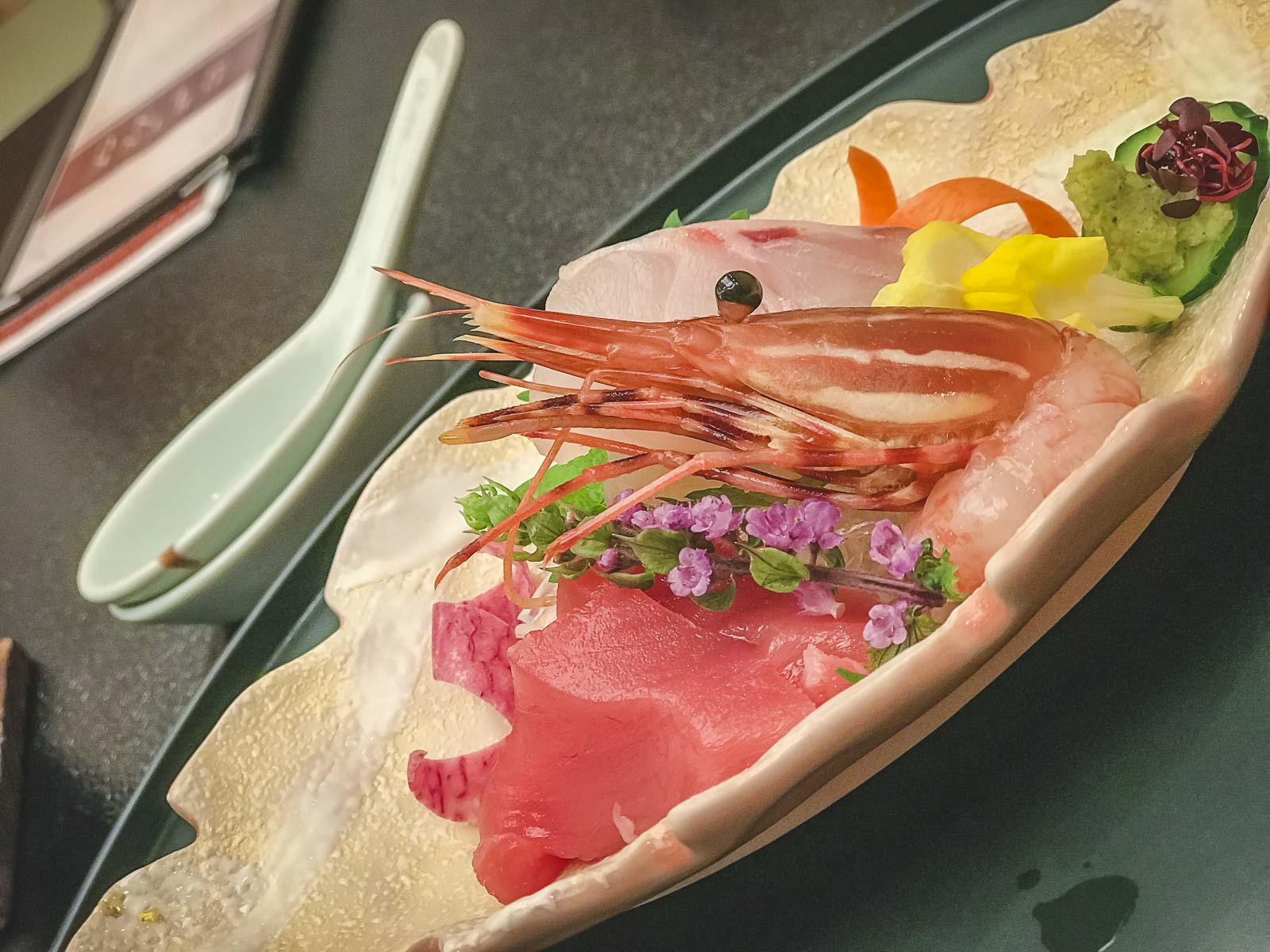
Sashimi is also a common menu item at American sushi restaurants. Sashimi is delicately sliced, fresh, raw fish served with pickled ginger, radish, wasabi, and soy sauce. Although some sushi contains raw fish, sashimi is different from sushi because it is not served with rice. Sashimi is actually the raw fish dish many think of as sushi.
3. Gyoza (Fried Dumplings)
If you’re looking for a taste of Japanese cuisine at home, look no further than Gyoza! These fried dumplings are easy to prepare at home and make a great appetizer. They can also serve as a main course alongside fried rice or noodles. Gyoza are dumplings (usually filled with pork and vegetables), fried in a pan until crisp and then steamed to finish cooking. Serve them with soy sauce for dipping! You can make your own Gyoza at home with this recipe.
4. Onigiri
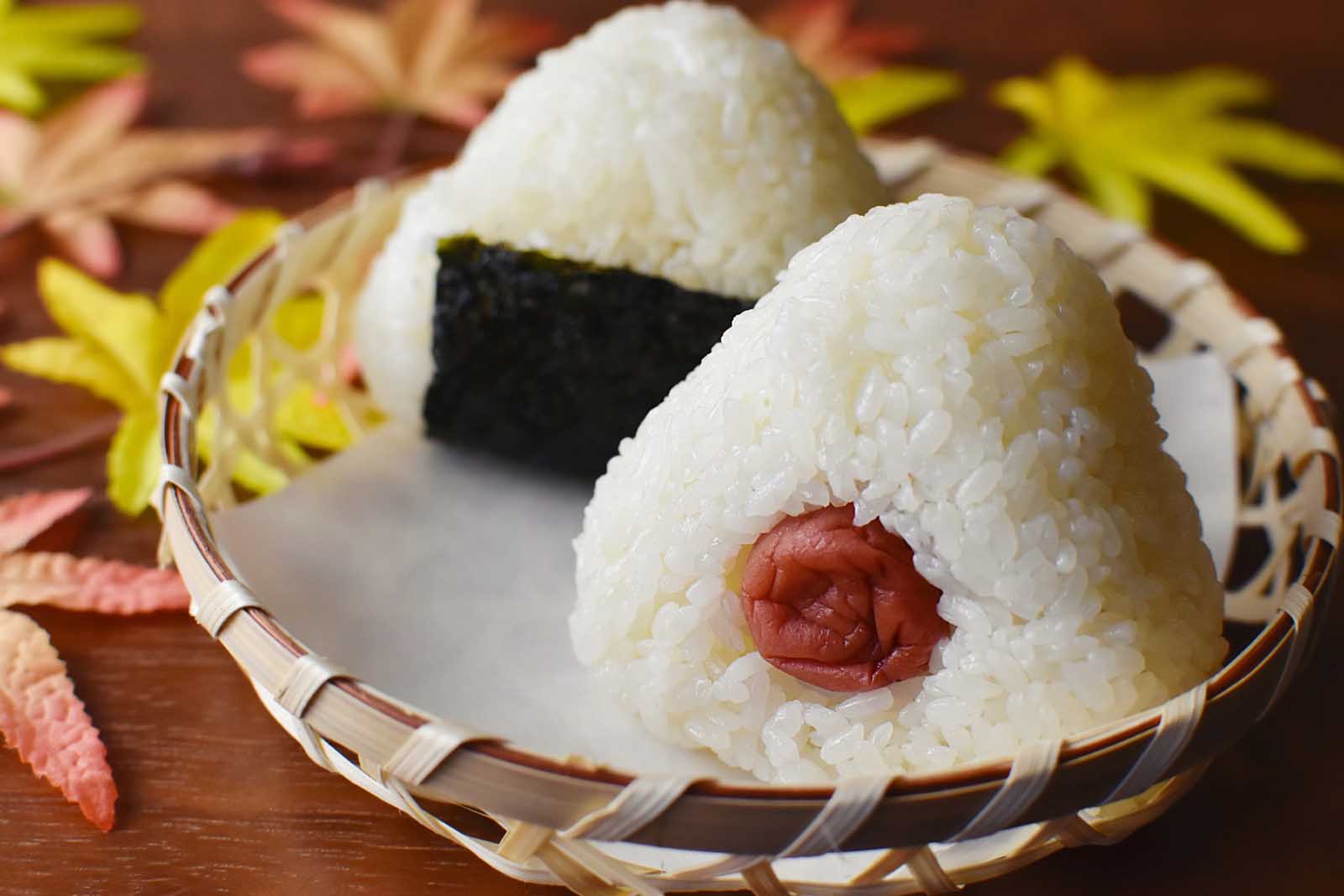
Onigiri is portable Japanese snack food. Onigiri is made of rice with a filling inside, shaped into a triangular shape, and placed in a piece of nori for convenient carrying. Common onigiri fillings include teriyaki chicken, seaweed, and tuna mayonnaise. In Japan, onigiri is usually sold in convenience stores as a cheap and tasty snack; but, it is one of the easiest Japanese foods to make at home! We seriously picked up Onigiri in a 7-Eleven!
5. Natto Rice Bowl
In Japan, the same kinds of foods are often eaten for breakfast, lunch, and dinner. The main difference between breakfast and other meals is light preparation and smaller portions. One of the most common breakfasts in Japan is the natto rice bowl. Natto is made of fermented soybeans, and it has a savory and salty flavor that tastes great over rice.
6. Fluffy Japanese Pancakes
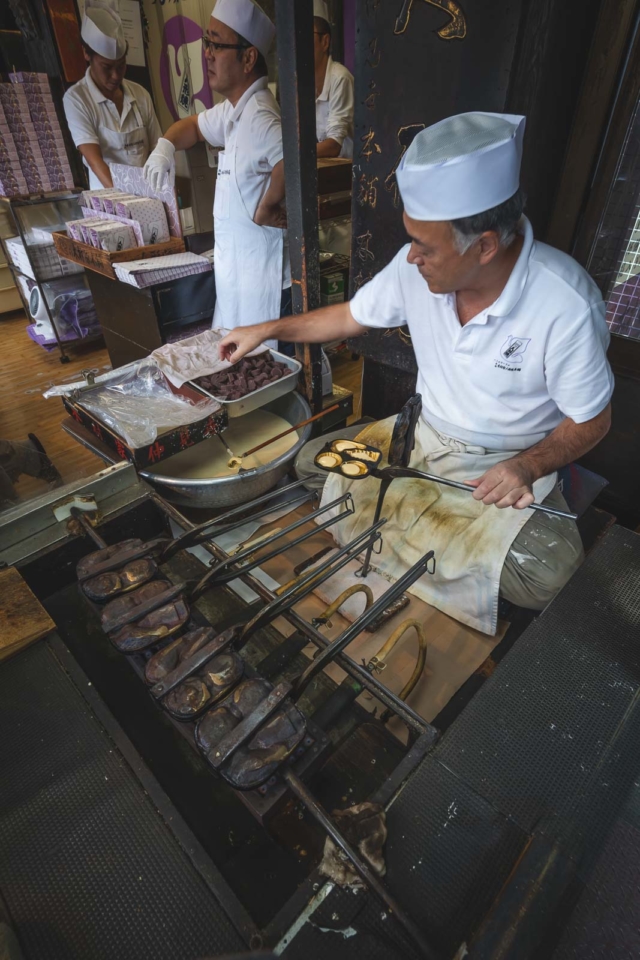
If soybeans aren’t your style and you’re looking for a traditional breakfast fix, you can whip up these ultra-fluffy Japanese pancakes at home. You can make fluffy Japanese pancakes at home by using a hand mixer to beat your egg whites until they’re stiff. The result will be a stack of the tallest, most jiggly pancakes you’ve ever had! Serve them with butter and syrup or honey.
7. Yakitori (Chicken Skewers)
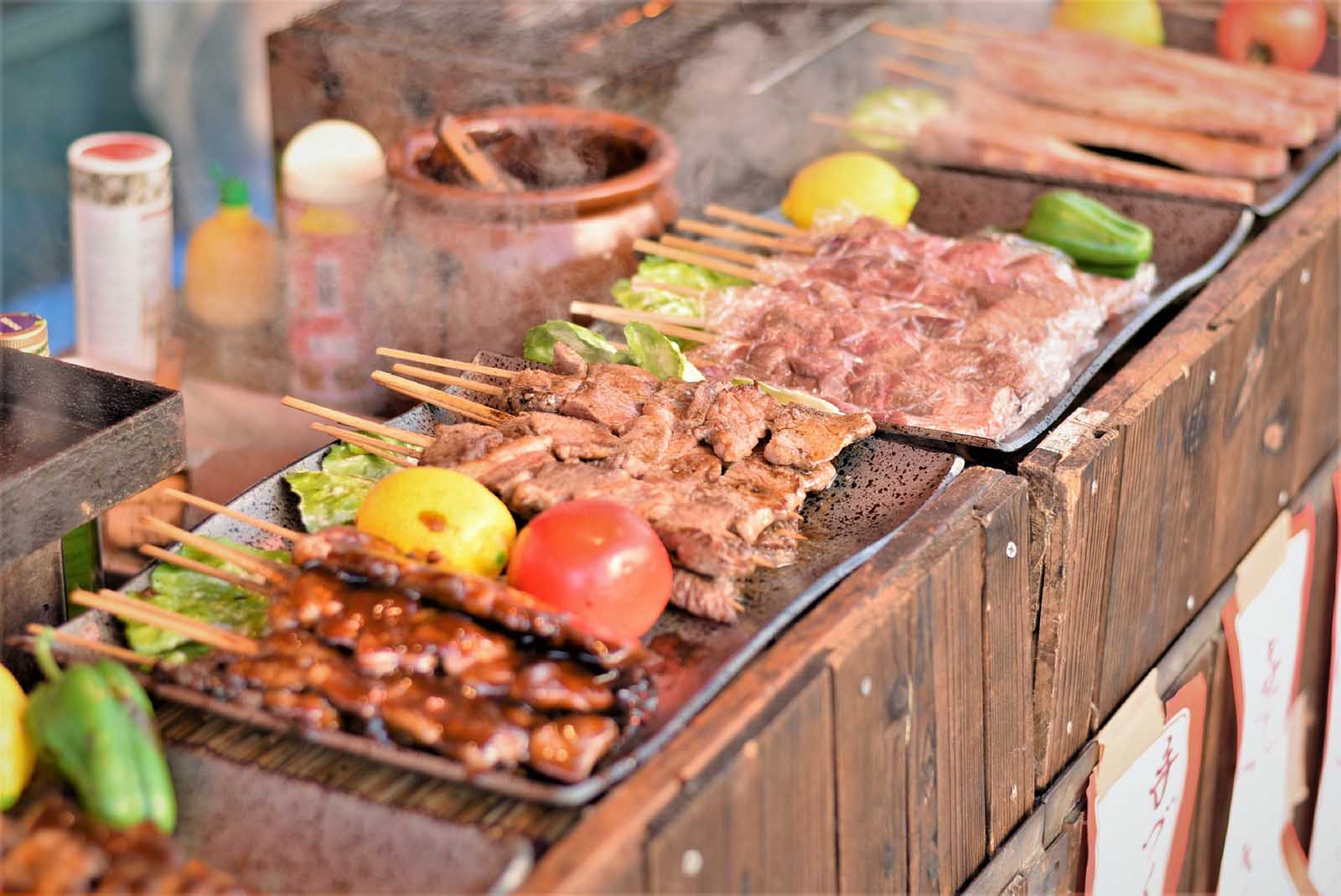
Yakitori means “barbecue chicken” in Japanese. Yakitori is a popular street food that you can find on any corner in Japanese cities. Before they’re grilled, these chicken skewers are brushed with a sauce made of mirin, sake, soy sauce, and sugar. You can pick one up as a quick snack or serve them with rice and vegetables as your main course.
8. Miso Soup
The Japanese eat miso soup alongside almost every meal. Miso broth is made from fermented soybeans and dashi broth. Miso soup often contains tofu, seaweed, and green onions. It’s common for Japanese people to heat up miso soup from the night before and eat it alongside their breakfast. Give that a try next time you’re craving a warm start to your day! We use this Miso soup Recipe all the time.
9. Ramen
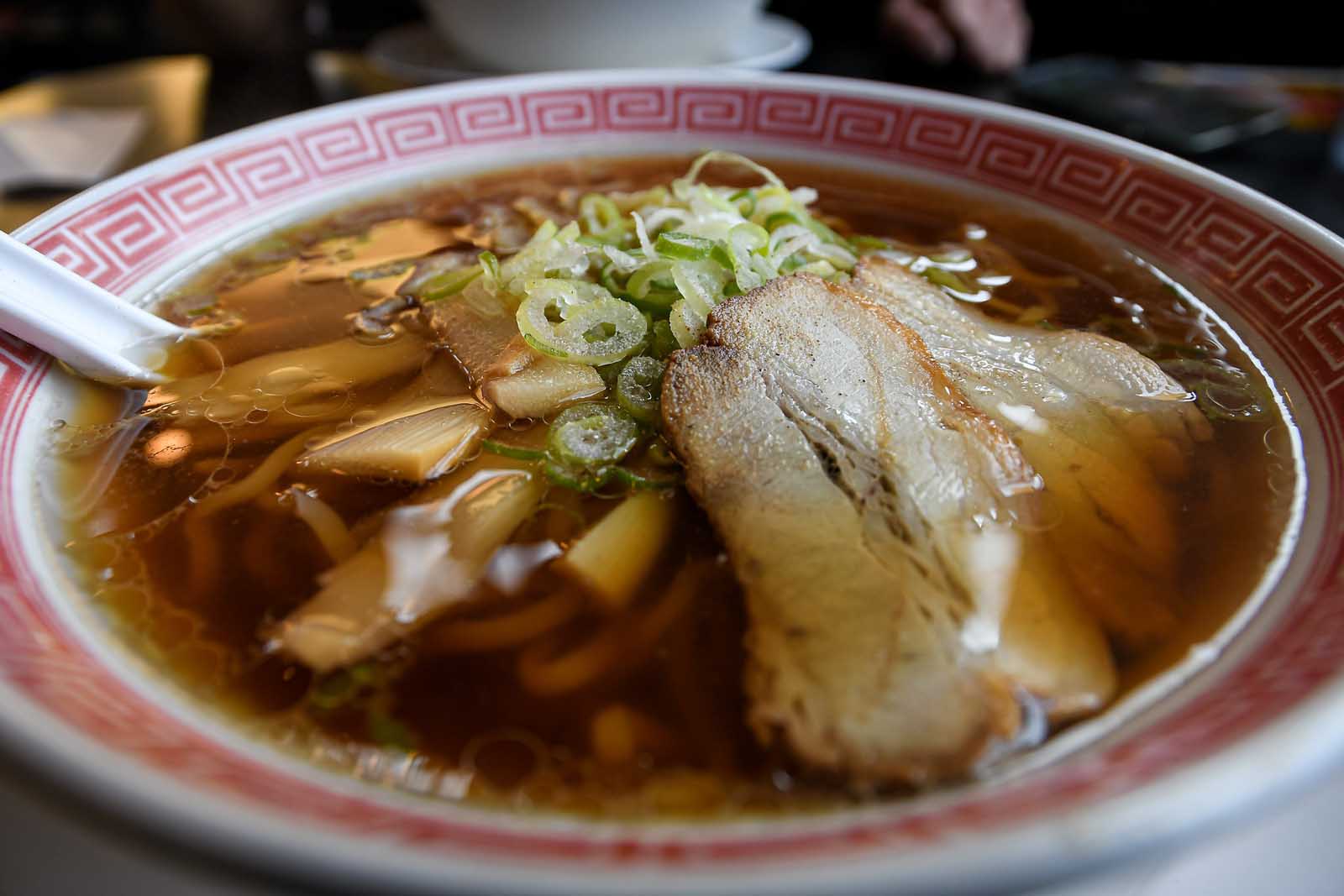
Ramen is one of the most well-known Japanese recipes. On a cold winter day, nothing is more comforting than a bowl of warm broth, thick noodles, and vegetables. If you’re a fan of instant ramen, you can always update your next bowl with soy sauce, chili paste, green onions, a soft-boiled egg, and any other toppings you want.
10. Kashipan (Sweet Bread)
Bakeries are everywhere in Japan, and Kashipan is one of their most popular snacks. Kashipan is a sweet bun, sometimes baked with cookie dough on top or sweet bean paste inside.
11. Yakisoba (Stir-Fried Noodles)
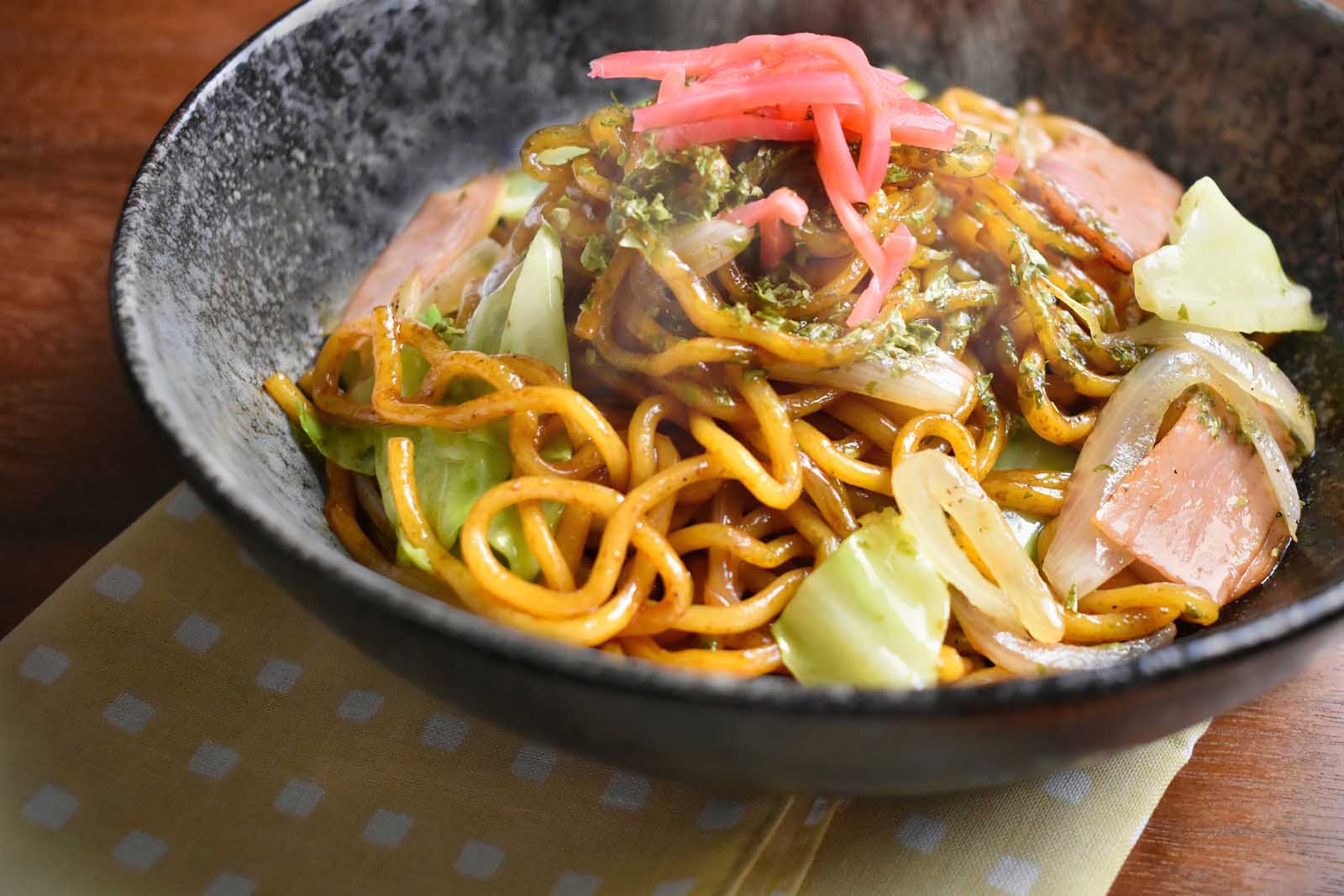
You can find yakisoba at any street festival in Japan. This fried noodle dish is made with barbecued noodles, pork, cabbage, and other vegetables. You can make your own version of yakisoba at home in a large frying pan or wok. This dish is full of rich flavor and is easy to make; just throw everything in one pan and let it sizzle!
12. Japanese Curry
Japanese curry is quite different from the Indian curries that you might be familiar with. Japanese curry has a sweet flavor and is prepared like a stew; meat and vegetables are cooked together with a curry paste that acts as a thickening agent.
Japanese curry is quite easy to make at home, especially if you can get your hands on some premade curry paste.
13. Nikujaga (Meat and Potatoes)
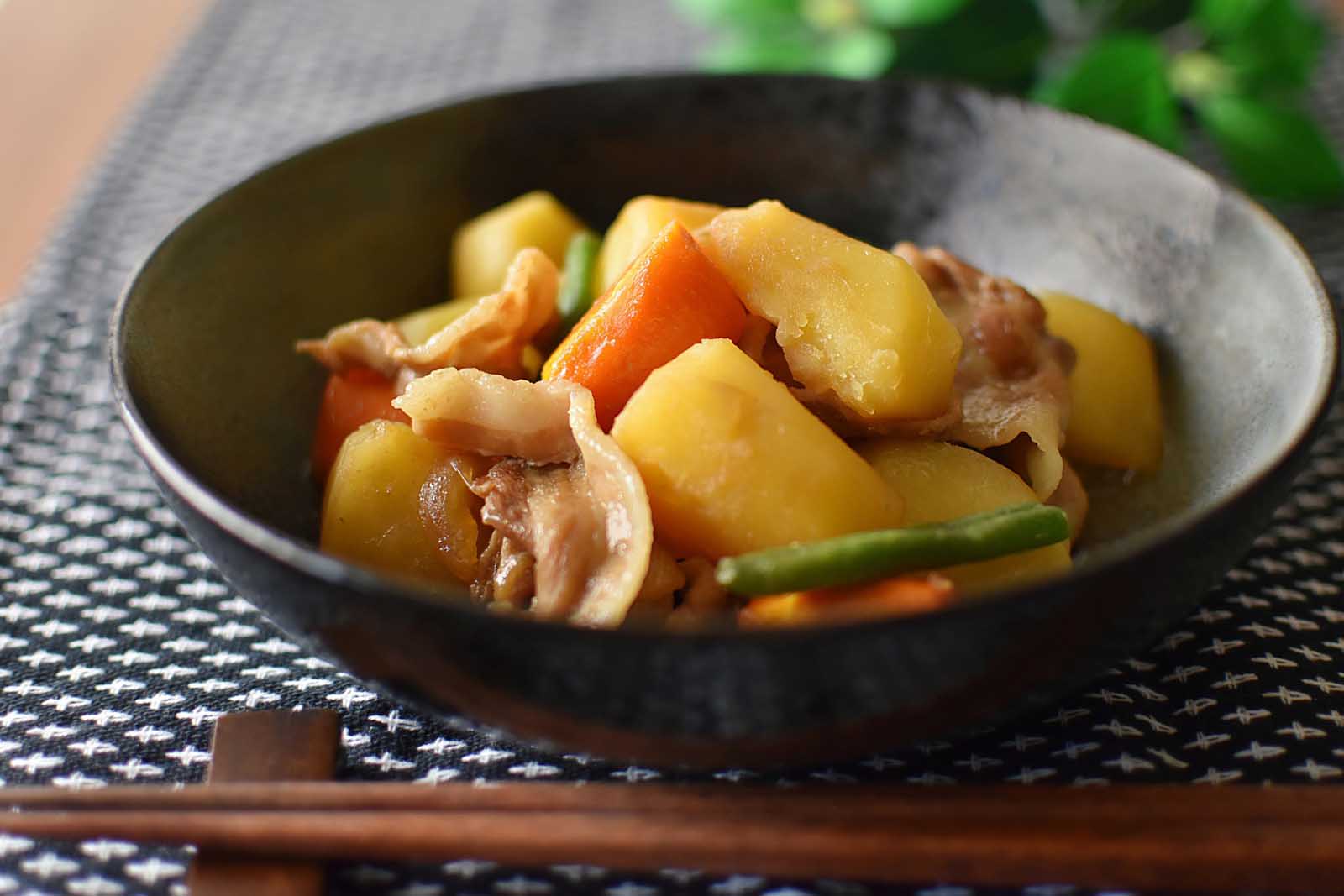
Roasted meat and potatoes are the backbones of many types of western cuisine. However, did you know that the Japanese have their own version of this dish?
Nikujaga is a meat and potato stew made with soy sauce, mirin, sake, and sugar. Nikujaga is a common household meal, and the best way to try it in Japan is to score an invite to a local’s home for dinner.
14. Takoyaki (Fried Octopus)
You don’t have to speak Japanese fluently to order Japanese food; but, when you ask for takoyaki, make sure you know you’re getting octopus.
Even though octopus isn’t a common snack in the U.S., don’t be afraid to try this delicious street food. The perfect way to try new food is smothered in batter, fried, and topped with seaweed and mayo.
15. Sukiyaki Hot Pot
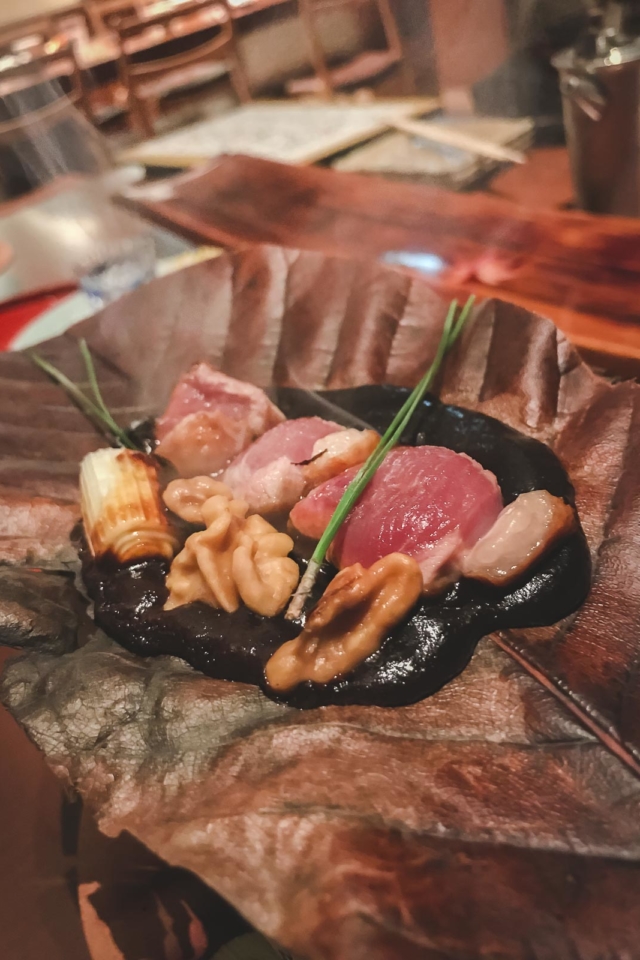
Hot pot is the ultimate comfort food for a cold day. Sukiyaki uses a broth made of mirin, sake, soy sauce, and sugar. Pour this rich broth over seared beef and vegetables.
Sukiyaki means, “cook what you like.” You can make your own version of a Japanese hot pot at home with whatever vegetables and proteins you want!
16. Tonkatsu (Pork Cutlets)
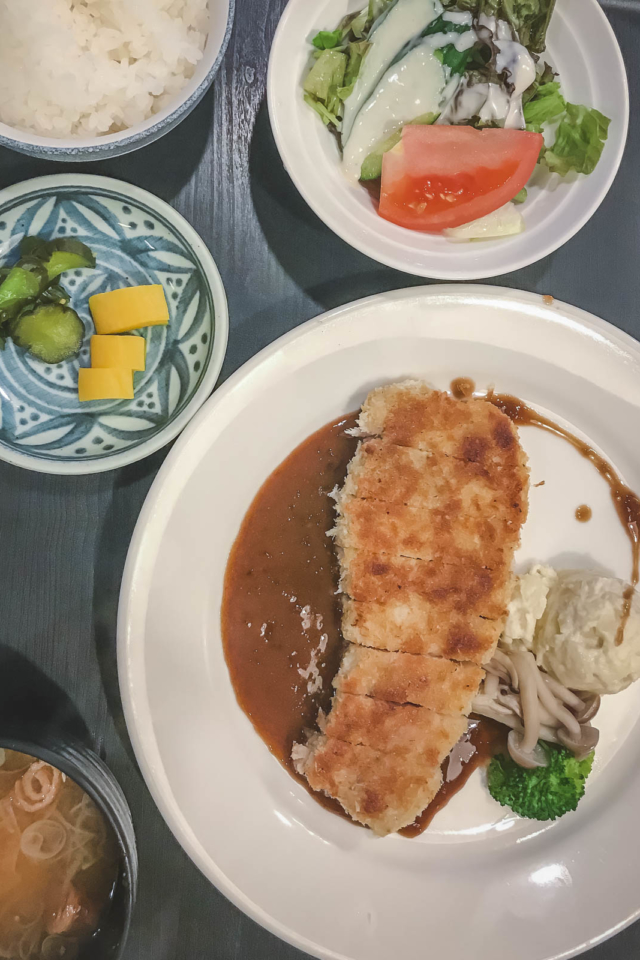
Europeans have introduced the Japanese to a number of western foods. Over time, Japanese cooks have made these dishes entirely their own, giving birth to new staple foods.
Tonkatsu pork cutlets are an example of this. These crispy-fried tenders look a lot like chicken strips; only they’re made with juicy, flavorful pork and served with crisp cabbage.
Fun fact: the Japanese word for European-introduced foods, such as tonkatsu, is “yoshoku.”
17. Tempura
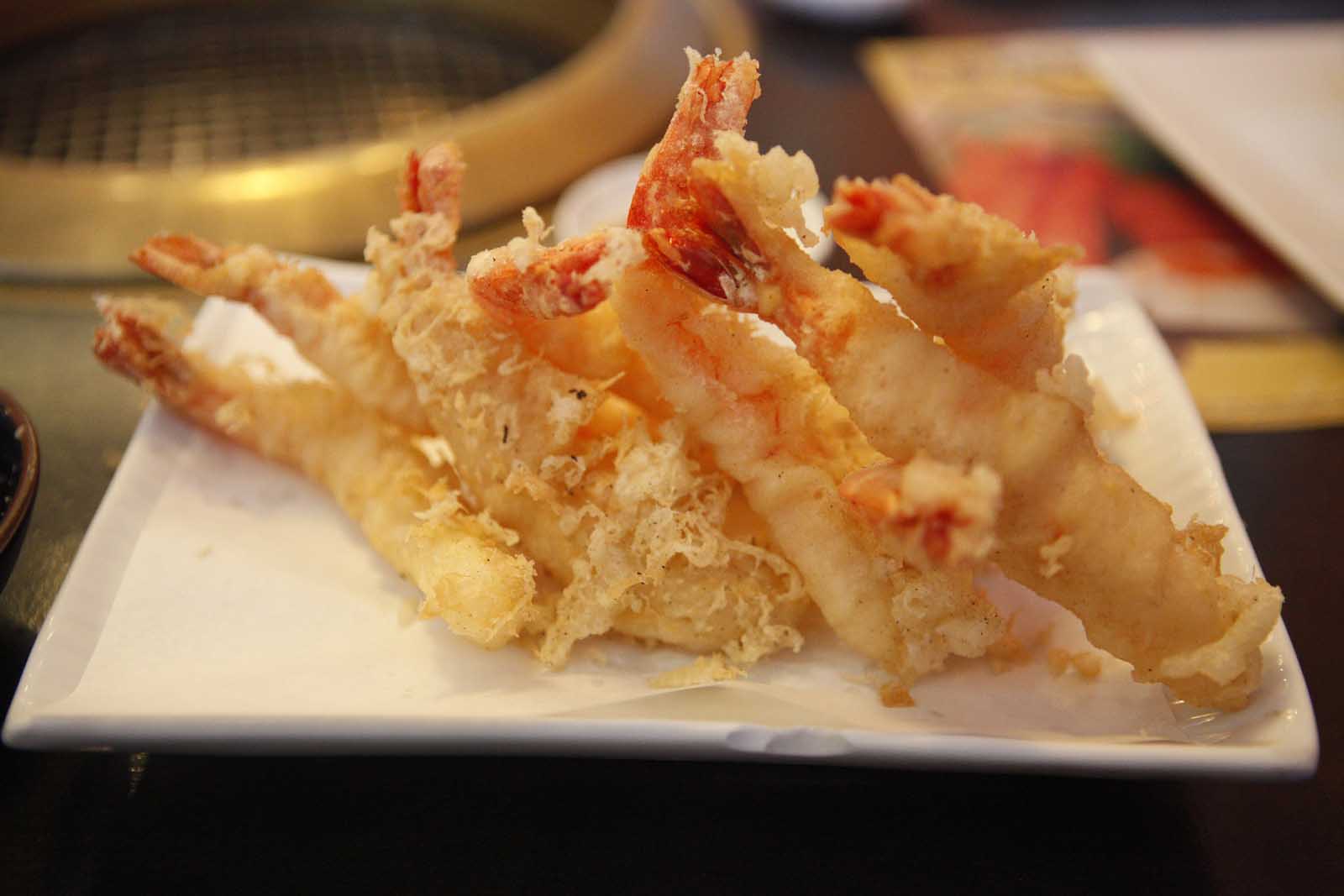
Speaking of fried snacks, everyone should try tempura at least once in their lives. You can find all kinds of tempura on the menu at most Japanese restaurants; shrimp, chicken, vegetables, tofu, and more.
You can also make tempura batter relatively easily at home! Always serve tempura-fried foods with soy sauce for a crisp, balanced flavor.
18. Udon Noodle Soup
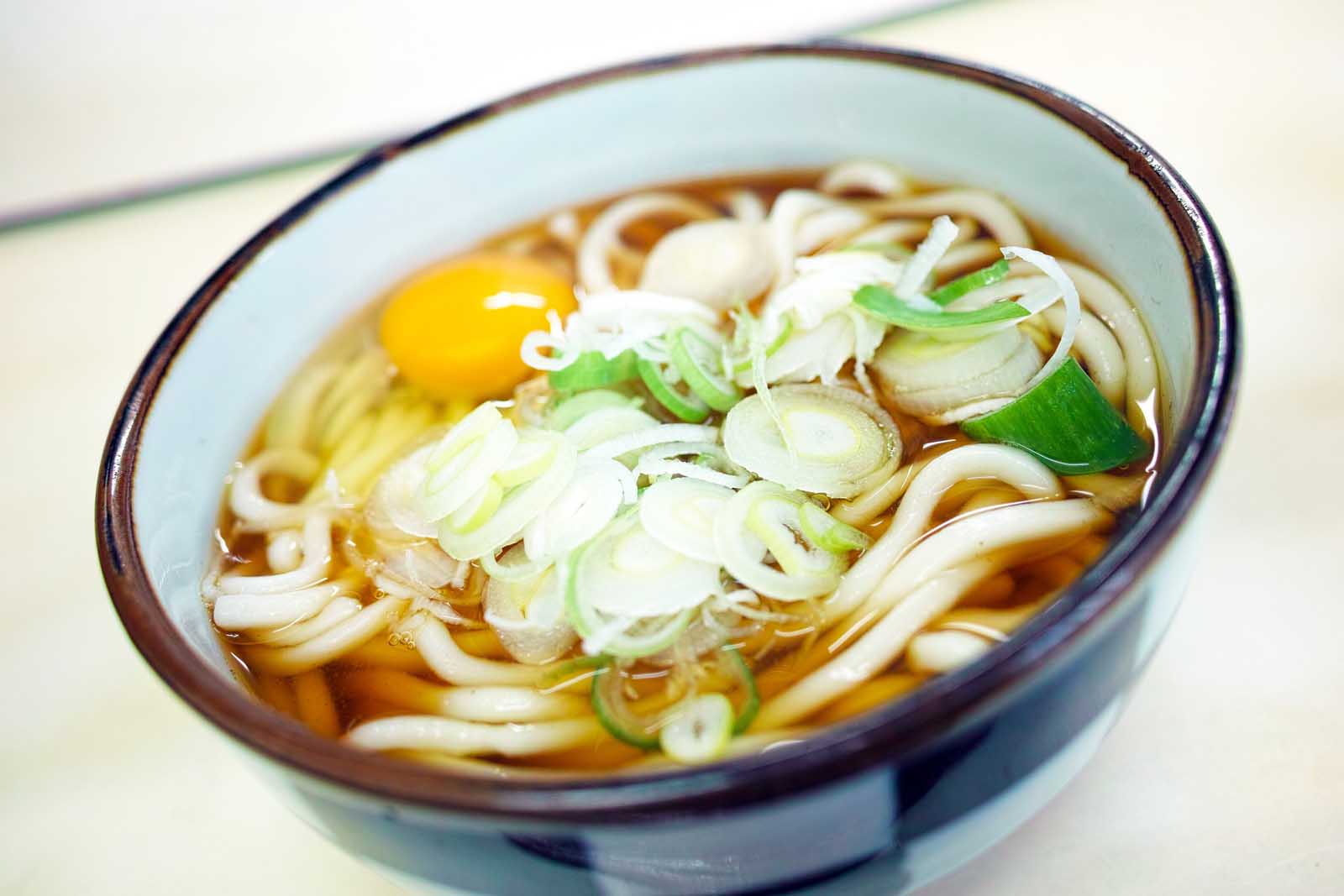
Udon noodles are a Japanese staple. These noodles are made from wheat flour and have a slightly chewy texture (perfect for slurping up from chopsticks).
The most common way to eat udon noodles is in udon noodle soup. You can top your soup with fried tofu, tempura-fried veggies, or anything else your heart desires.
19. Soba (Buckwheat Noodles)
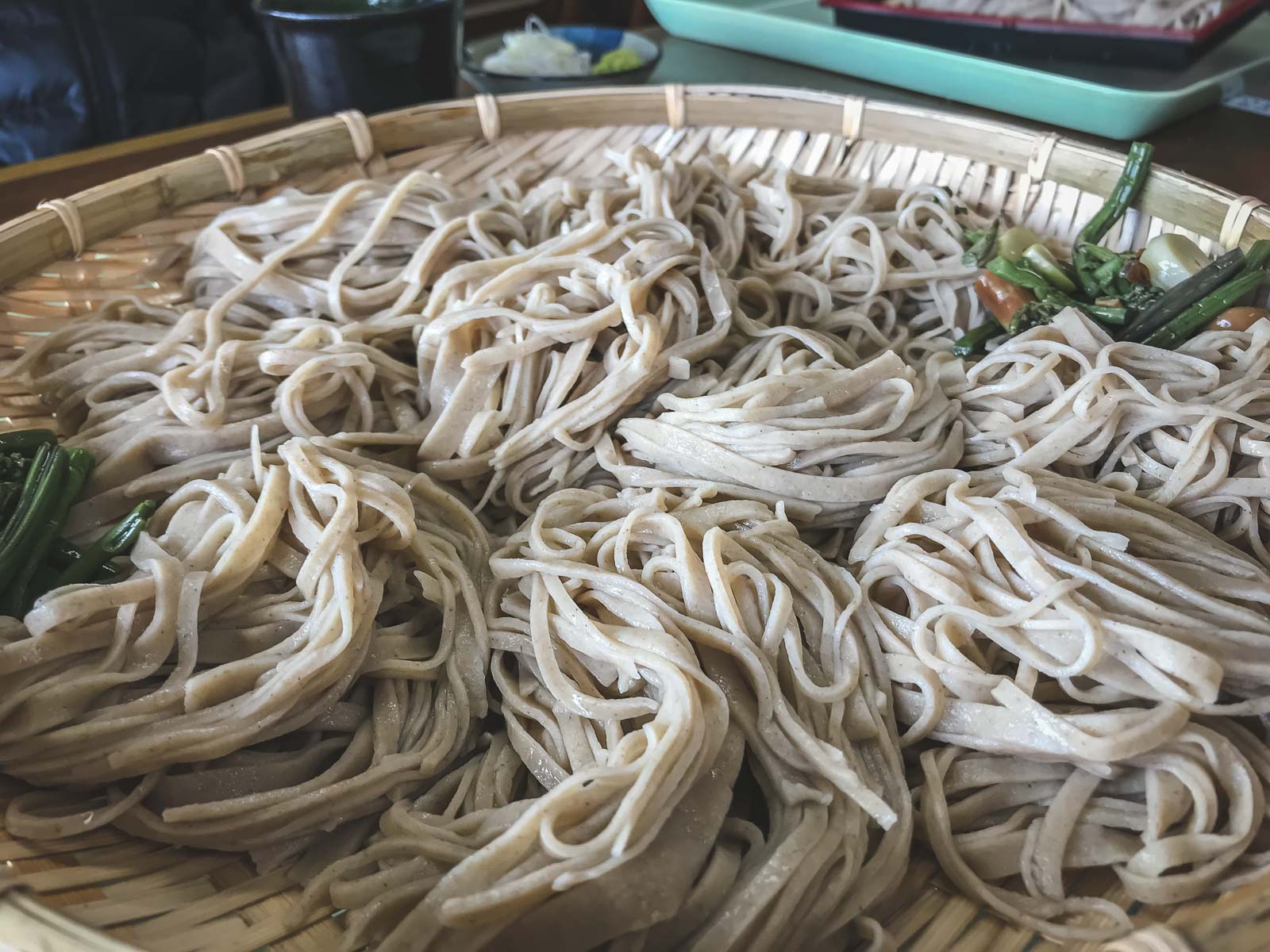
Another staple noodle in Japan is the soba noodle. Soba noodles are always made with buckwheat flour, which gives them a unique, subtly nutty flavor.
Soba noodles pair well with strong flavors like garlic, sesame oil, or chili.
20. Okonomiyaki (Savory Pancake)
Have you ever been to a dim sum restaurant and had a scallion pancake? Okonomiyaki is the Japanese version of the savory pancake. Okonomiyaki is made with cabbage, batter, and any other ingredients you wish.
In Japan, it is easy to find restaurants that specialize in okonomiyaki. You can also make this pan-fried dish easily in your own kitchen!
Try Traditional Japanese Food at Home or Abroad
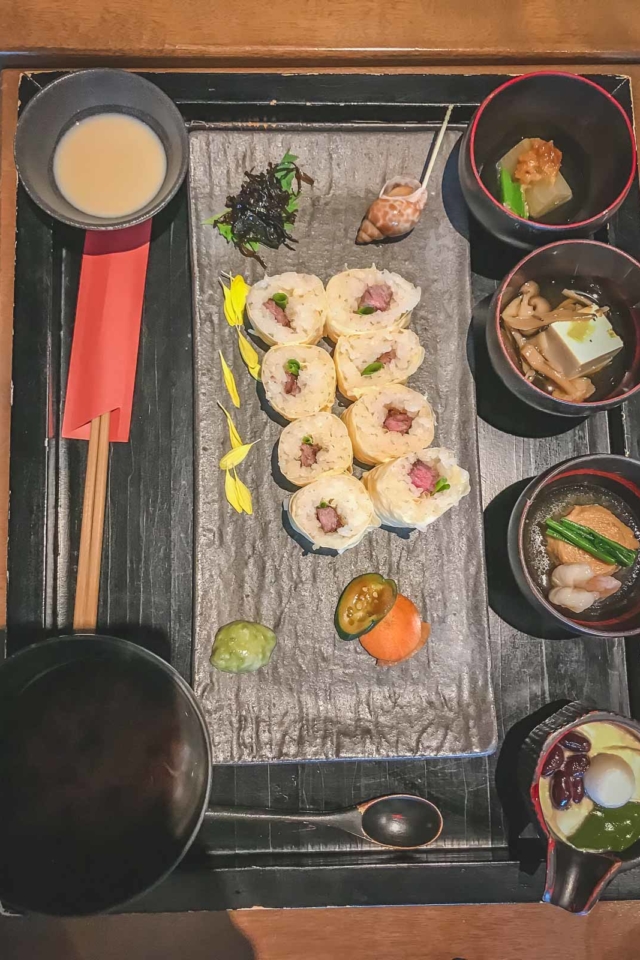
Learning how to cook traditional Japanese food at home is easier than you might think! Give one of these dishes a try next time you’re out of dinner ideas.
Check out our Japan Travel Guide if you’re interested in trying these dishes (and much more) in Japan! Traveling across the world is a breeze with our expert tips and travel guides.

